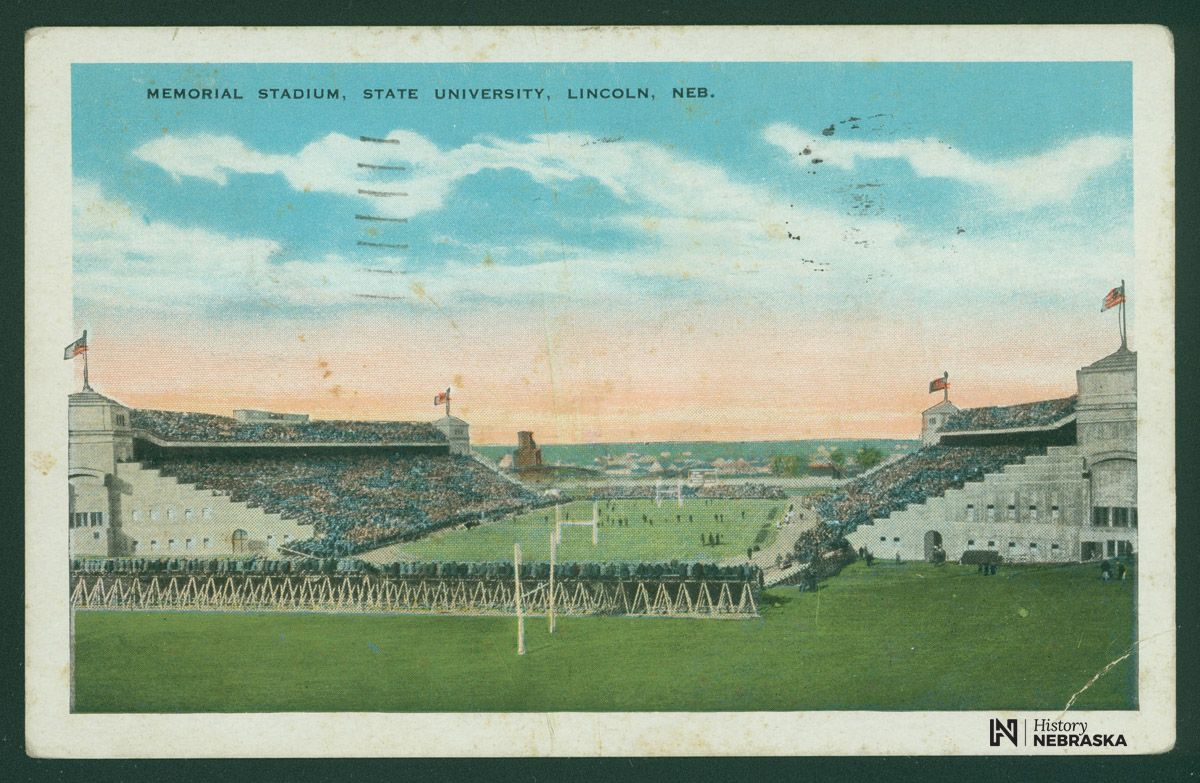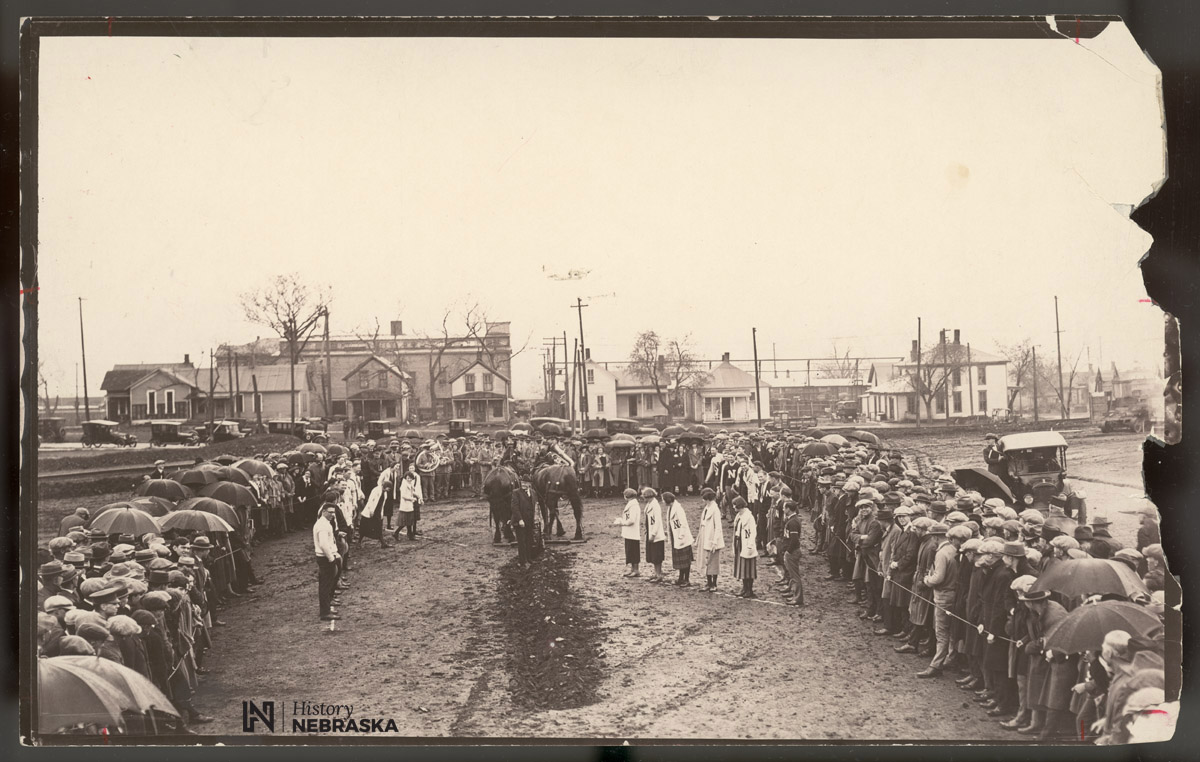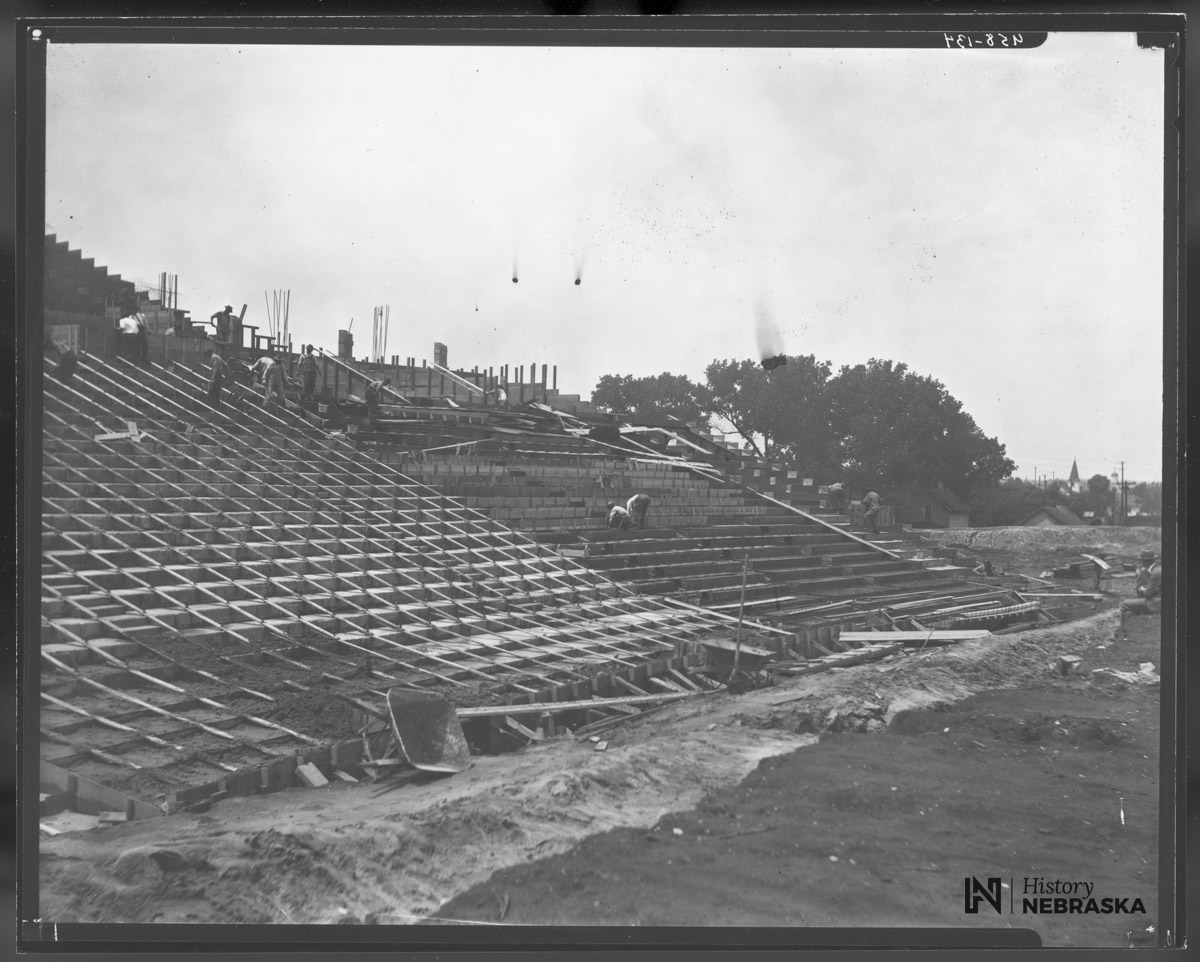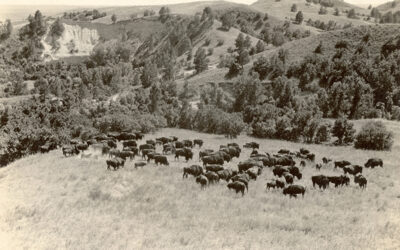Memorial Stadium on the University of Nebraska campus in Lincoln is the center of the state’s attention during the Huskers’ home football games.
It was built to commemorate the men and women who served in World War I, which began over one hundred years ago in 1914. The stadium was constructed without state funding, replacing the antecedent Nebraska Field, and was financed by pledges made by university students, staff, alumni, and boosters.
In March 1919 a memorial was proposed for Roscoe “Dusty” Rhodes, captain-elect of the 1918 university football team, who had been killed in France. Enthusiasm on campus for a gymnasium or stadium ran high, and the Nebraska Memorial Association was formed to begin fundraising. The Nebraska Soldiers and Sailors Memorial was projected to be an impressive complex, with a museum, stadium, gymnasium, and an assembly room for veterans’ gatherings.
Campus fundraising began officially on May 20, 1920. In early June the Lincoln and Omaha campaigns began. County committees were set up to canvass the rest of the state. However, a faltering economy and resistance from some local editors, American Legion chapters, and bank managers brought the campaign to a halt.
In late 1921 the fund drive was terminated and the Memorial Association was reorganized. More realistic goals were set. The target amount was reduced, and the gymnasium-stadium complex was scaled back to a stadium only. New project architects were also secured: John Latenser of Omaha and Ellery Davis of Lincoln, who both donated their professional services.
The Nebraska Memorial Association aggressively sought contributions and pledges from students and others around the state. It promised that home games would be played in the new stadium in the fall of 1923. When enough pledges had been subscribed, although not all had been collected, the association risked letting contracts. On April 26, 1923, a stadium groundbreaking ceremony was held, at which Chancellor Samuel Avery turned the first earth with a plow and team.
Nebraska played its first game in the new stadium on October 13, 1923, against the University of Oklahoma. Memorial Stadium was dedicated a week later on October 20 at the homecoming game with the University of Kansas.
The stadium never included all the features that the first war memorial plans called for, such as a museum or friezes. However, the state finally had a usable stadium which, with later additions and improvements, would serve the university’s nationally recognized football program. More information on Memorial Stadium and its financing can be found in a 1998 article from Nebraska History magazine.






